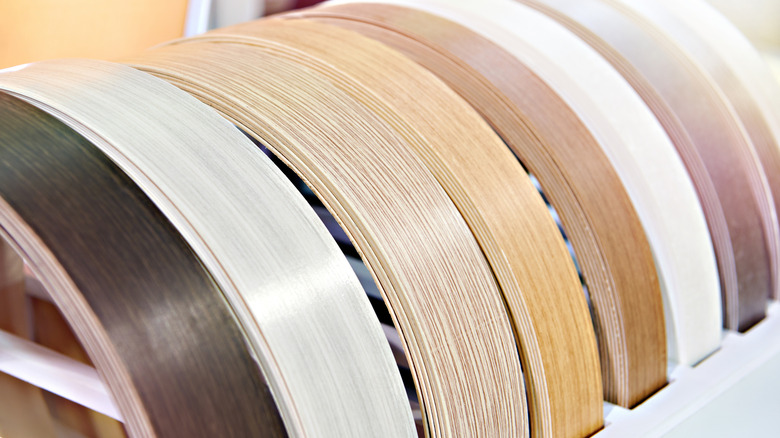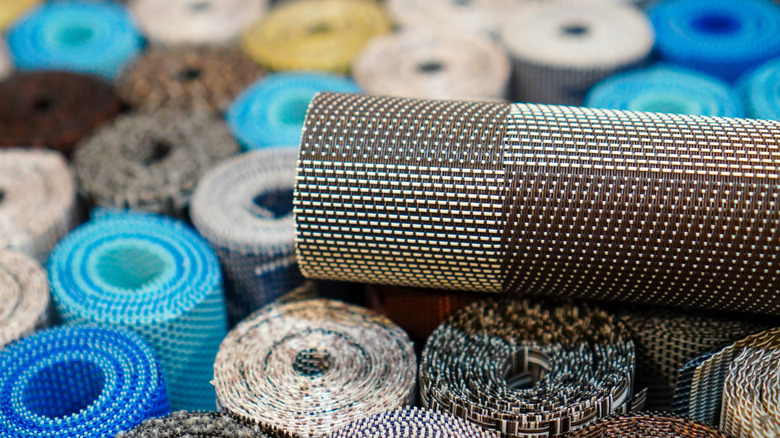How To Prepare Wood Shelving To Prevent Delicate Linens From Snagging In Storage
We may receive a commission on purchases made from links.
Wood may be one of the top materials for linen closet shelving you need to consider, but it has its issues. Have you ever gone to pull a set of sheets out of your linen closet and had them snagged on the wooden shelves? Between ripping a hole in the sheets and pulling a splinter out of the wood, you are dealing with some frustrating damage. The good news is that you can avoid this situation, whether you are working with a set of shiny new wooden shelves or your old, reliable ones. As another bonus, you can choose from a few different options to make the shelf preparation work best for you and your style.
Leaving your wooden shelves unfinished can set you up for potential problems, so you should prepare them by applying paint, a sealant, or shelf liners. If you choose not to protect the shelves in any way, they can be susceptible to damage from general wear and tear or any moisture. This is especially true for certain types of wood. Pine, for example, is a softwood that can be more prone to damage over time and should be prepared. All of these options are also great because they smooth out the shelf, making a better surface for sliding towels, sheets, and blankets without fear of snagging. The best way to prepare your shelves largely depends on your aesthetic goals, although each of these methods has its pros and cons for longevity and application.
How to prepare your shelves with paint, sealants, or edge banding
One shelf preparation option is painting. After sanding, applying a primer, painting, and, optionally, adding a top coat, your wood will be smooth enough for your linens to be safe. Painting is an easy and affordable option, but it changes the look of your shelves, so it may not be the best option if you prefer a natural aesthetic.
If, instead, you want to preserve the natural look of your wood, use a clear sealant. Oil-based or water-based polyurethane sealer is a great choice for dark woods, and polycrylic protective finish works well on lighter woods. To apply a sealer, you will need to thoroughly sand your wood and wipe the surface clean. In a well-ventilated space, brush or wipe on a coat of the sealant. For a second coat, wait until the first is completely dry, sand the sealant, and apply another layer.
Another option is to use wood tape banding. Wood tape banding lets your shelves stay completely natural on the top and bottom but adds some necessary protection for both the wood and your linens. Also called edge banding, this wood veneer product protects the edges of wooden furniture, and it is easy to apply. Choose wood tape banding that matches your shelves, such as this ZYJT Birch Edge Banding. Hold the banding where you want it and carefully use an iron to melt the adhesive into place. Once it has cooled, press it into place and trim off any excess.
How to maintain your new wooden shelves
One even easier method is applying a liner to your shelves. Liners offer the least protection to the wood, as they do not coat the entire surface, but they can prevent snags without changing the shelf. There are a variety of decorative and plain options, so you can choose from the best shelf liners for protecting your linens. Simply measure your shelves and cut the liner to size. Wash your shelves with warm water and let them dry completely before putting the liner in place. You can trim as needed, but otherwise, your liners are ready to go. You can also combine liners with sealant or paint for added protection on the surfaces. This is particularly helpful if you will be frequently moving bulky items on and off the shelves, as the liners will also prevent wear on your sealant or paint, lengthening the life of your hard work.
Finally, when your shelves are complete and protected, you can refresh your linen closet on a budget with Dollar Tree storage essentials. Not only will baskets and bins help keep your linens safe, but they will also help you keep your space organized. No matter which option you choose, you should take steps to maintain your shelves. Keep the shelves clean and dusted, and remember that you can reapply sealant coats or new liners whenever they are needed. Also, avoid storing anything too heavy on your wooden shelves, as this can cause them to bend and warp over time.


